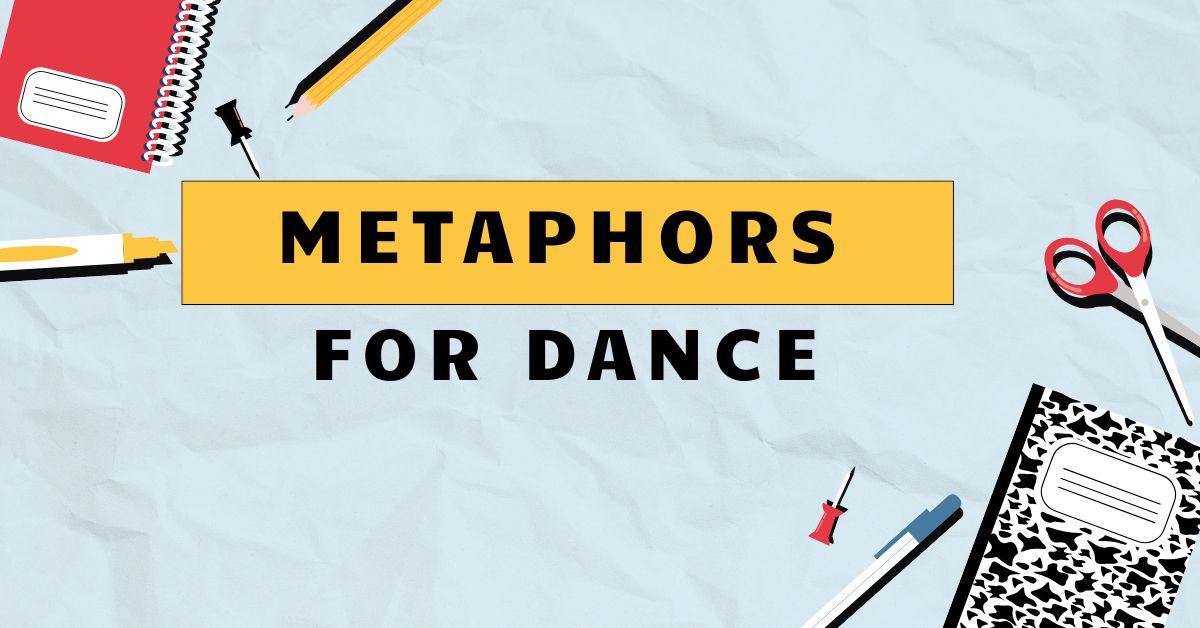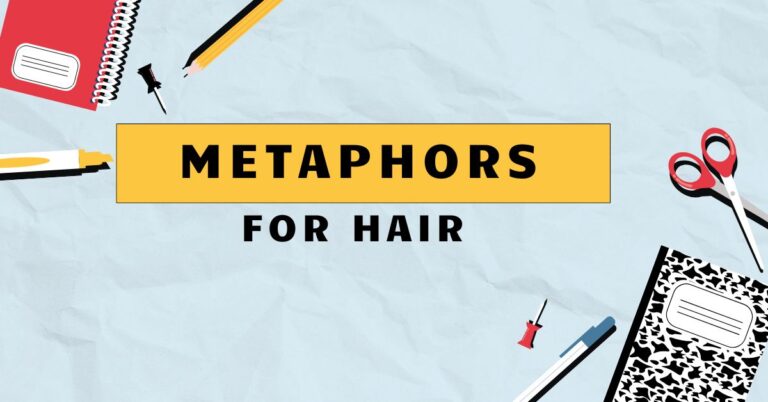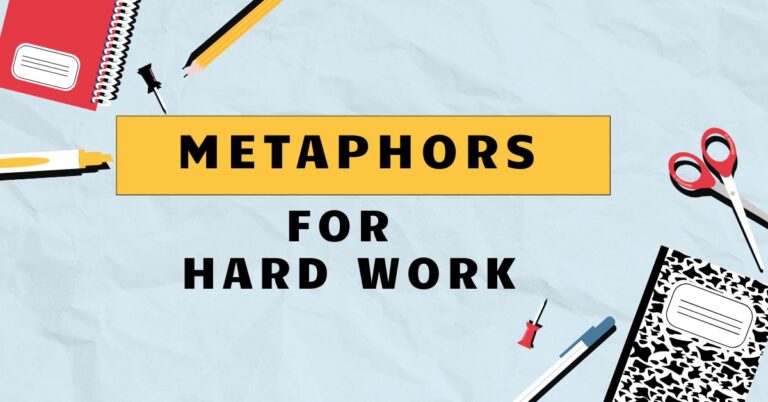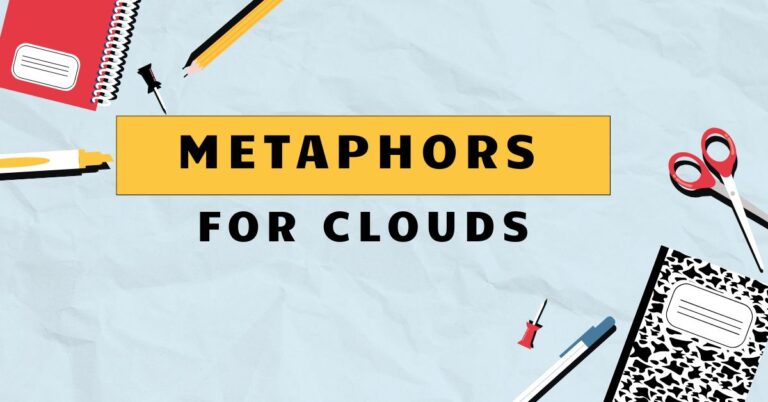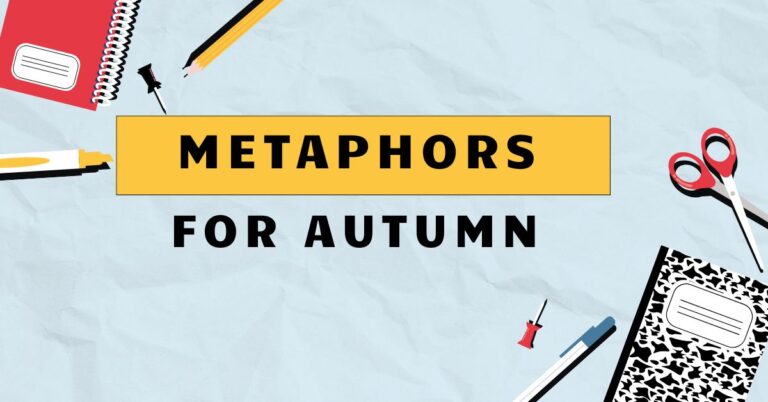37 Metaphors for Dance: Expressing Movement Through Language
Dance, a wordless art form, often transcends the limitations of verbal description. To capture its essence, we turn to metaphors – figures of speech that bridge the gap between movement and language.
Understanding metaphors for dance enriches our appreciation of both the art form and the English language. This article delves into the world of dance metaphors, exploring their structure, function, and diverse applications.
Whether you’re a dancer, a writer, or simply an admirer of the arts, this guide will provide you with the tools to articulate the beauty and power of dance with greater precision and creativity.
Table of Contents
- Introduction
- Definition of Metaphor for Dance
- What is a Metaphor?
- Dance Metaphor Defined
- Function of Dance Metaphors
- Structural Breakdown
- Source Domain
- Target Domain
- Mapping
- Types and Categories of Dance Metaphors
- Metaphors of Nature
- Metaphors of Emotion
- Metaphors of Objects
- Metaphors of Force
- Metaphors of Light and Shadow
- Examples of Metaphors for Dance
- Nature Metaphor Examples
- Emotion Metaphor Examples
- Object Metaphor Examples
- Force Metaphor Examples
- Light and Shadow Metaphor Examples
- Usage Rules
- Appropriateness
- Clarity and Specificity
- Avoiding Clichés
- Common Mistakes
- Overused Metaphors
- Mixed Metaphors
- Inaccurate Metaphors
- Practice Exercises
- Exercise 1: Identifying Metaphors
- Exercise 2: Creating Metaphors
- Exercise 3: Correcting Metaphors
- Advanced Topics
- Extended Metaphors
- Conceptual Metaphors
- Metaphor in Dance Criticism
- FAQ
- Conclusion
Definition of Metaphor for Dance
Metaphors are essential tools for expressing abstract concepts in more concrete and relatable terms. They allow us to understand one thing in terms of another, creating vivid imagery and deeper understanding.
In the context of dance, metaphors are particularly useful for describing movements, emotions, and overall artistic expression that are often difficult to articulate literally.
What is a Metaphor?
A metaphor is a figure of speech that directly compares two unlike things without using “like” or “as.” It asserts that one thing *is* another, attributing qualities of the second thing to the first. This comparison is not meant to be taken literally, but rather to create a new understanding or appreciation of the first thing.
For instance, saying “He is a lion in battle” doesn’t mean the person is literally a lion, but that they possess the lion’s courage and ferocity.
Dance Metaphor Defined
A dance metaphor uses figurative language to describe the qualities, movements, and impact of dance by comparing it to something else. It helps to convey the feeling, intention, and visual aspects of a dance performance in a way that resonates with the audience.
Dance metaphors can describe the dancer’s movements, the overall choreography, the emotional impact of the dance, or even the music accompanying the dance. They provide a richer and more evocative description than literal language could achieve.
For example, describing a dancer’s movement as “liquid silk” evokes a sense of fluidity, smoothness, and grace. This goes beyond simply saying the dancer moved smoothly; it creates a sensory experience for the reader or listener.
Function of Dance Metaphors
Dance metaphors serve several important functions:
- Enhance Description: They provide vivid and imaginative descriptions of dance, making it more engaging and accessible.
- Convey Emotion: They communicate the emotional content and impact of a dance performance.
- Interpret Meaning: They offer insights into the choreographer’s intentions and the underlying themes of the dance.
- Bridge Understanding: They help audiences connect with the art form on a deeper level by relating it to familiar concepts and experiences.
- Add Artistic Value: They elevate the language used to describe dance, transforming simple descriptions into artistic expressions.
Structural Breakdown
Understanding the structure of a metaphor can help you create and interpret them more effectively. A metaphor typically consists of two main components: the source domain and the target domain.
Source Domain
Thesource domainis the concept or object that is used to describe the target domain. It’s the familiar, concrete thing that we use to understand something less familiar or more abstract.
In the example “The dancer’s movements were like liquid silk,” the source domain is “liquid silk.” It is something tangible and easily visualized.
Target Domain
Thetarget domainis the concept or object that is being described. It is the less familiar or more abstract thing that we are trying to understand.
In the example “The dancer’s movements were like liquid silk,” the target domain is “the dancer’s movements.” This is what we are trying to understand better by comparing it to liquid silk.
Mapping
Mappingis the process of connecting the attributes of the source domain to the target domain. It involves identifying the similarities between the two and using those similarities to create a meaningful comparison.
In our example, the mapping involves connecting the fluidity, smoothness, and grace of liquid silk to the dancer’s movements. This mapping allows us to understand the movements as being fluid, smooth, and graceful.
The effectiveness of a metaphor depends on the strength and relevance of the mapping between the source and target domains. A good metaphor will have clear and compelling connections between the two, making the comparison insightful and memorable.
Types and Categories of Dance Metaphors
Dance metaphors can be categorized based on the types of concepts they draw upon. Here are some common categories:
Metaphors of Nature
These metaphors compare dance movements or qualities to elements of nature, such as animals, plants, weather, or landscapes. They often evoke a sense of organic beauty, power, or tranquility.
Examples include “The dancers moved like a flock of birds” or “Her leaps were as high as a mountain peak.”
Metaphors of Emotion
These metaphors express the emotional content of a dance through comparisons to feelings, moods, or states of mind. They help to convey the emotional impact of the dance on the audience.
Examples include “The dance was a whirlwind of grief” or “Their duet was a tender embrace of hope.”
Metaphors of Objects
These metaphors compare dance movements or qualities to inanimate objects, such as machines, tools, or structures. They can highlight precision, strength, or complexity.
Examples include “His movements were as sharp as a knife” or “The choreography was a delicate clockwork mechanism.”
Metaphors of Force
These metaphors use concepts of force, energy, and power to describe dance movements. They emphasize the intensity, dynamism, and impact of the dance.
Examples include “The dancer exploded onto the stage” or “Her energy was a tidal wave.”
Metaphors of Light and Shadow
These metaphors use light and shadow imagery to describe the nuances of movement and emotion in dance. They can convey a sense of contrast, depth, and mystery.
Examples include “The dancers moved in pools of shadow” or “Her smile illuminated the stage.”
Examples of Metaphors for Dance
Here are some examples of dance metaphors, organized by category:
Nature Metaphor Examples
The following table provides examples of nature metaphors used to describe dance. Each example highlights how elements of nature can be used to convey the qualities and movements of dance.
| Metaphor | Explanation |
|---|---|
| “Her movements were like a willow in the wind.” | Suggests flexibility, grace, and responsiveness to external forces. |
| “The dancers flowed like a river, constantly changing yet always moving forward.” | Implies continuous, fluid motion and progression. |
| “His jumps were as powerful as a mountain lion’s.” | Highlights strength, agility, and explosive energy. |
| “The choreography was a blossoming flower, unfolding with each movement.” | Conveys growth, beauty, and gradual revelation. |
| “Their pas de deux was a gentle rain, soothing and refreshing.” | Evokes a sense of calm, tranquility, and emotional release. |
| “She pranced like a gazelle across the stage.” | Implies lightness, speed, and elegance. |
| “The ensemble moved as one, like a murmuration of starlings.” | Highlights unity, synchronicity, and collective energy. |
| “His solo was a solitary tree, reaching for the sky.” | Conveys individuality, aspiration, and resilience. |
| “The stage was their ocean, and they were the waves.” | Implies vastness, power, and constant motion. |
| “Her footwork was as intricate as a spider’s web.” | Highlights complexity, precision, and delicate artistry. |
| “The dance was a thunderstorm of passion and rage.” | Evokes intensity, drama, and emotional turmoil. |
| “They danced like fireflies in the night, fleeting and luminous.” | Implies ephemerality, beauty, and enchantment. |
| “The ballerina was a swan, gliding effortlessly across the water.” | Conveys grace, elegance, and serenity. |
| “Their movements echoed the rhythm of the earth.” | Highlights groundedness, stability, and primal energy. |
| “The dance unfolded like the seasons, each movement a new stage of life.” | Implies cyclical change, growth, and transformation. |
| “His leaps were as boundless as the sky.” | Conveys freedom, limitlessness, and boundless energy. |
| “The dancers swayed like reeds in a gentle breeze.” | Implies flexibility, surrender, and harmony with nature. |
| “The choreography was a landscape of emotions, with peaks and valleys.” | Highlights emotional range, depth, and complexity. |
| “Her presence was a sunbeam, warming the entire stage.” | Evokes positivity, radiance, and uplifting energy. |
| “Their dance was a dance of wolves, circling their prey.” | Highlights predatory instincts, tension, and anticipation. |
| “The performance was a gentle snow, falling softly on the audience.” | Conveys peace, tranquility, and ethereal beauty. |
| “She moved like a vine, twisting and reaching with fluid grace.” | Implies flexibility, growth, and interconnectedness. |
| “The dance was a forest, teeming with life and movement.” | Highlights diversity, energy, and interconnectedness. |
| “His steps were as sure as a mountain goat’s.” | Conveys confidence, agility, and sure-footedness. |
| “The dancers were seeds, sprouting and growing with each beat.” | Implies potential, growth, and transformation. |
Emotion Metaphor Examples
The following table illustrates how emotional metaphors can be used to enrich the description of dance, providing deeper insight into the feelings and intentions conveyed through movement.
| Metaphor | Explanation |
|---|---|
| “The dance was a scream of anguish.” | Expresses intense pain, suffering, and emotional release. |
| “Their duet was a silent conversation of love.” | Conveys intimacy, connection, and unspoken emotions. |
| “His solo was a battle against despair.” | Highlights struggle, resilience, and inner conflict. |
| “The choreography was a tapestry of longing and hope.” | Conveys a complex mix of emotions, desires, and aspirations. |
| “Her movements were a whisper of regret.” | Evokes a sense of sadness, remorse, and introspection. |
| “The dance was an explosion of joy.” | Expresses exuberance, happiness, and celebratory energy. |
| “Their performance was a mirror reflecting the audience’s own vulnerabilities.” | Highlights empathy, connection, and emotional resonance. |
| “His presence was a beacon of hope in the darkness.” | Conveys inspiration, guidance, and positive energy. |
| “The dance was a wave of nostalgia, washing over the audience.” | Evokes memories, longing, and emotional connection to the past. |
| “Her steps were a dance of defiance against oppression.” | Highlights resistance, courage, and empowerment. |
| “The choreography was a dance of forgiveness, a release of past hurts.” | Conveys healing, reconciliation, and emotional freedom. |
| “They moved with the quiet strength of enduring love.” | Implies commitment, resilience, and unwavering affection. |
| “Her expression was an open book, revealing every emotion.” | Conveys honesty, vulnerability, and emotional transparency. |
| “The dance was a plea for understanding and compassion.” | Highlights empathy, connection, and a desire for acceptance. |
| “Their movements were a dance of liberation, breaking free from constraints.” | Implies freedom, empowerment, and self-expression. |
| “His passion ignited the stage like a wildfire.” | Conveys intensity, energy, and infectious enthusiasm. |
| “The dance was a lullaby, soothing and comforting the audience.” | Implies peace, tranquility, and emotional support. |
| “Their connection was a silent language, understood by all.” | Highlights intimacy, understanding, and unspoken communication. |
| “She danced with the weight of the world on her shoulders.” | Conveys burden, responsibility, and emotional strain. |
| “The choreography was a dance of resilience, overcoming adversity.” | Highlights strength, perseverance, and the ability to bounce back from challenges. |
| “The performance was a catharsis, releasing pent-up emotions.” | Conveys emotional release, purification, and healing. |
| “Their movements were a celebration of life, embracing every moment.” | Implies joy, appreciation, and a zest for living. |
| “The dance was a prayer, a heartfelt expression of hope and faith.” | Highlights spirituality, devotion, and a search for meaning. |
| “His solo was a meditation on loneliness, a journey into solitude.” | Conveys introspection, isolation, and a search for connection. |
| “The dancers were flames, consuming the stage with their energy.” | Implies passion, intensity, and transformative power. |
Object Metaphor Examples
This table provides examples of metaphors that use objects to describe dance, focusing on how inanimate things can represent the qualities and movements of a performance.
| Metaphor | Explanation |
|---|---|
| “Her movements were as precise as clockwork.” | Highlights accuracy, coordination, and mechanical precision. |
| “The dancers moved like gears in a machine, each playing a vital role.” | Conveys interdependence, functionality, and synchronized action. |
| “His leaps were like bullets, piercing the air with speed and force.” | Implies power, velocity, and impact. |
| “The choreography was a delicate tapestry, woven with intricate steps.” | Conveys complexity, artistry, and interconnectedness. |
| “Her presence was a magnet, drawing the audience’s attention.” | Evokes attraction, influence, and captivating energy. |
| “The stage was their canvas, and they painted it with their movements.” | Highlights creativity, expression, and artistic creation. |
| “Their bodies were instruments, playing a symphony of motion.” | Conveys harmony, coordination, and artistic expression. |
| “His movements were as sharp as a razor’s edge.” | Implies precision, intensity, and cutting-edge technique. |
| “The dancers were puppets, controlled by the choreographer’s vision.” | Highlights control, precision, and artistic direction. |
| “Her steps were like building blocks, creating a solid foundation for the dance.” | Conveys structure, stability, and foundational technique. |
| “The dance was a mirror, reflecting the audience’s own emotions.” | Highlights reflection, empathy, and emotional resonance. |
| “They moved like shadows, silently gliding across the stage.” | Implies mystery, subtlety, and ethereal presence. |
| “Her posture was a steel rod, unwavering and strong.” | Conveys strength, resilience, and unwavering determination. |
| “The choreography was a puzzle, each piece fitting perfectly into place.” | Highlights complexity, precision, and interconnectedness. |
| “Their movements were like keys, unlocking hidden emotions in the audience.” | Implies revelation, understanding, and emotional connection. |
| “His presence was a spotlight, illuminating the stage with his talent.” | Conveys attention, focus, and exceptional skill. |
| “The dance was a labyrinth, a journey through complex emotions.” | Highlights complexity, exploration, and emotional depth. |
| “Their bodies were vessels, carrying the story of the dance.” | Conveys conveyance, storytelling, and emotional expression. |
| “She moved with the grace of a pendulum, swinging between emotions.” | Implies balance, rhythm, and emotional fluctuation. |
| “The dancers were sculptures, molded by the choreographer’s vision.” | Highlights artistry, form, and creative expression. |
| “The performance was a time machine, transporting the audience to another era.” | Conveys escapism, nostalgia, and historical connection. |
| “Their movements were magnets, pulling the audience into their world.” | Implies attraction, immersion, and captivating presence. |
| “The dance was a compass, guiding the audience through emotional terrain.” | Highlights direction, guidance, and emotional navigation. |
| “His solo was a bridge, connecting the audience to his inner world.” | Conveys connection, understanding, and emotional accessibility. |
| “The dancers were diamonds, shining brightly with talent and skill.” | Implies brilliance, value, and exceptional performance. |
Force Metaphor Examples
This table provides examples of metaphors that use concepts of force to describe dance, highlighting the energy, power, and impact of the movements.
| Metaphor | Explanation |
|---|---|
| “The dancers exploded onto the stage with raw energy.” | Highlights suddenness, intensity, and explosive power. |
| “Their movements were a force of nature, unstoppable and powerful.” | Conveys natural power, resilience, and overwhelming energy. |
| “His jumps defied gravity, soaring through the air with ease.” | Implies power, agility, and a transcendence of physical limitations. |
| “The choreography was a tidal wave, building in intensity and crashing with force.” | Conveys buildup, momentum, and overwhelming power. |
| “Her presence was electric, charging the atmosphere with energy.” | Evokes excitement, intensity, and captivating power. |
| “The dancers were magnets, pulling the audience into their world.” | Implies attraction, immersion, and captivating presence. |
| “Their movements were a storm, raging with passion and intensity.” | Conveys turbulence, emotion, and overwhelming force. |
| “His energy was a vortex, drawing the audience into the heart of the dance.” | Implies intensity, focus, and captivating power. |
| “The dancers were lightning bolts, striking the stage with their brilliance.” | Highlights speed, intensity, and electrifying presence. |
| “Her steps were like thunder, shaking the stage with their impact.” | Conveys power, intensity, and resonating energy. |
| “The dance was a whirlwind, sweeping the audience away on a journey of emotion.” | Highlights intensity, movement, and emotional impact. |
| “They moved with the force of a hurricane, relentless and unstoppable.” | Implies power, destruction, and overwhelming energy. |
| “Her presence was a gravitational pull, holding the audience captive.” | Conveys attraction, focus, and captivating power. |
| “The choreography was a volcano, building in pressure and erupting with emotion.” | Highlights buildup, release, and emotional intensity. |
| “Their movements were like shockwaves, reverberating through the audience.” | Implies impact, resonance, and lasting effect. |
| “His passion ignited the stage like a wildfire, spreading rapidly and uncontrollably.” | Conveys intensity, energy, and infectious enthusiasm. |
| “The dance was a current, pulling the audience along with its flow.” | Highlights momentum, direction, and captivating force. |
| “Their bodies were springs, coiling and releasing with explosive energy.” | Implies stored energy, release, and dynamic movement. |
| “She moved with the strength of a dam, holding back a torrent of emotion.” | Conveys control, restraint, and suppressed intensity. |
| “The dancers were cannons, firing off bursts of energy and emotion.” | Highlights power, impact, and explosive expression. |
| “The performance was a tidal surge, overwhelming the senses with its power.” | Conveys intensity, force, and sensory impact. |
| “Their movements were a magnetic field, drawing the audience closer.” | Implies attraction, connection, and captivating presence. |
| “The dance was a steamroller, flattening any emotional resistance.” | Highlights power, intensity, and overwhelming force. |
| “His solo was a rocket, launching into the stratosphere with passion.” | Conveys speed, intensity, and soaring ambition. |
| “The dancers were dynamos, generating energy that electrified the stage.” | Implies power, intensity, and captivating performance. |
Light and Shadow Metaphor Examples
This table provides examples of metaphors that use light and shadow to describe dance, highlighting the nuance, contrast, and emotional depth of the movements.
| Metaphor | Explanation |
|---|---|
| “The dancers moved in pools of shadow, their forms barely visible.” | Highlights mystery, subtlety, and hidden depths. |
| “Their movements were a dance between light and darkness, joy and sorrow.” | Conveys contrast, emotional complexity, and nuanced expression. |
| “His presence was a spotlight, illuminating the stage with his talent.” | Implies focus, attention, and exceptional skill. |
| “The choreography was a chiaroscuro, contrasting light and shadow to create depth.” | Conveys artistic technique, contrast, and visual impact. |
| “Her smile illuminated the stage, radiating warmth and happiness.” | Evokes positivity, radiance, and uplifting energy. |
| “The stage was a canvas of light, painted with their movements.” | Highlights artistry, visual beauty, and expressive movement. |
| “Their bodies were silhouettes, defined by the light behind them.” | Conveys form, shape, and artistic composition. |
| “His movements were like flashes of lightning, illuminating the darkness.” | Implies brilliance, intensity, and sudden revelation. |
| “The dancers were shadows, gliding silently across the stage.” | Highlights mystery, subtlety, and ethereal presence. |
| “Her steps were like sunbeams, piercing through the clouds of sadness.” | Conveys hope, positivity, and emotional upliftment. |
| “The dance was a moonlit dream, ethereal and enchanting.” | Highlights mystery, beauty, and otherworldly quality. |
| “They moved with the grace of twilight, a blend of light and shadow.” | Implies transition, subtlety, and balanced contrast. |
| “Her presence was a beacon, guiding the audience through the darkness.” | Conveys hope, guidance, and inspirational power. |
| “The choreography was a mosaic of light and shadow, creating a complex narrative.” | Highlights complexity, contrast, and storytelling through movement. |
| “Their movements were like stars, twinkling with brilliance and energy.” | Implies beauty, radiance, and captivating presence. |
| “His passion ignited the stage like a supernova, radiating intensity and energy.” | Conveys intensity, passion, and transformative power. |
| “The dance was a shadow play, telling a story through silhouettes and shapes.” | Highlights artistry, storytelling, and visual expression. |
| “Their bodies were lamps, radiating emotion and energy.” | Implies illumination, expression, and captivating presence. |
| “She moved with the lightness of moonlight, ethereal and graceful.” | Conveys beauty, grace, and otherworldly quality. |
| “The dancers were fireflies, flitting across the stage with luminous energy.” | Highlights beauty, ephemerality, and enchanting presence. |
| “The performance was a solar flare, bursting with energy and light.” | Conveys intensity, power, and transformative impact. |
| “Their movements were a dance of shadows, revealing hidden emotions.” | Implies mystery, subtlety, and emotional depth. |
| “The dance was a kaleidoscope, shifting patterns of light and color.” | Highlights diversity, beauty, and visual complexity. |
| “His solo was a black hole, drawing the audience into its depths.” | Conveys mystery, intensity, and captivating power. |
| “The dancers were prisms, refracting light into a spectrum of emotions.” | Implies diversity, expression, and emotional range. |
Usage Rules
Using metaphors effectively involves understanding some key rules and considerations.
Appropriateness
Choose metaphors that are appropriate for the context and audience. Consider the tone and style of your writing or speech, and select metaphors that align with it.
A metaphor that is too informal or humorous might not be suitable for a serious or academic discussion.
Clarity and Specificity
Ensure that your metaphors are clear and easy to understand. Avoid using obscure or overly complex metaphors that might confuse your audience.
The connection between the source and target domains should be readily apparent.
Avoiding Clichés
Steer clear of overused or clichéd metaphors. These metaphors have lost their impact and can make your writing sound unoriginal.
Strive to create fresh and imaginative metaphors that will capture your audience’s attention.
Common Mistakes
Several common mistakes can undermine the effectiveness of your metaphors.
Overused Metaphors
Using clichés or tired metaphors can make your writing seem uninspired. For example, saying “The dancer was a fish out of water” is a common and often ineffective metaphor.
Instead, try to create a more original comparison.
Incorrect: “The dancer was a fish out of water.”
Correct: “The dancer appeared like a fragile hummingbird caught in a hurricane, struggling to find balance amidst the chaos.”
Mixed Metaphors
Combining two or more incompatible metaphors can create a confusing and nonsensical image. For example, saying “The dance was a rollercoaster of emotions that sailed through the night” mixes the metaphors of a rollercoaster and a sailing ship.
Incorrect: “The dance was a rollercoaster of emotions that sailed through the night.”
Correct: “The dance was a rollercoaster of emotions, with exhilarating highs and terrifying lows.”
Inaccurate Metaphors
Using metaphors that don’t accurately reflect the qualities of the target domain can be misleading or confusing. For example, saying “The dancer was as slow as a cheetah” is inaccurate because cheetahs are known for their speed.
Incorrect: “The dancer was as slow as a cheetah.”
Correct: “The dancer moved with the deliberate, measured pace of a seasoned chess player, each step calculated and precise.”
Practice Exercises
Test your understanding of metaphors for dance with these exercises.
Exercise 1: Identifying Metaphors
Identify the metaphors in the following sentences and explain what they convey.
| Question | Answer |
|---|---|
| 1. Her leaps were as high as mountain peaks. | Metaphor: “as high as mountain peaks.” Conveys the height and grandeur of her leaps. |
| 2. The dance was a whisper of regret. | Metaphor: “a whisper of regret.” Conveys the subtle and sorrowful nature of the dance. |
| 3. His movements were as sharp as a knife. | Metaphor: “as sharp as a knife.” Conveys the precision and incisiveness of his movements. |
Exercise 2: Creating Metaphors
Create a metaphor for each of the following dance scenarios:
- A powerful, energetic solo:
- A graceful, flowing duet:
- A chaotic, disorienting ensemble piece:
Exercise 3: Correcting Metaphors
Identify and correct the mistakes in the following metaphors:
- The dancer was a raging inferno of tranquility.
- His movements were a gentle earthquake, softly shaking the stage.
- The dance was a serene volcano, erupting with calm.
Advanced Topics
For those looking to deepen their understanding of dance metaphors, here are some advanced topics to explore.
Extended Metaphors
An extended metaphor is a metaphor that is developed over several lines or even an entire piece of writing. It allows for a more detailed and nuanced comparison between the source and target domains, creating a richer and more complex understanding.
For example, instead of simply saying “The dance was a journey,” you could develop this metaphor by describing the various stages of the journey, the challenges faced along the way, and the ultimate destination. This extended metaphor would provide a more comprehensive and engaging interpretation of the dance.
Conceptual Metaphors
Conceptual metaphors are underlying cognitive structures that shape the way we think and understand abstract concepts. They are often unconscious and pervasive, influencing our language and thought patterns.
For example, the conceptual metaphor “ARGUMENT IS WAR” shapes the way we talk about arguments, using language such as “attacking a position,” “defending an argument,” and “winning a debate.” In the context of dance, conceptual metaphors can influence the way we interpret and describe movements, emotions, and relationships between dancers.
Metaphor in Dance Criticism
Metaphors play a crucial role in dance criticism, allowing critics to articulate their interpretations and evaluations of dance performances. Effective use of metaphors can enhance the clarity, insightfulness, and artistic value of dance criticism.
Critics use metaphors to describe the qualities of movements, the emotional impact of the dance, and the overall artistic vision of the choreographer. By carefully selecting and crafting their metaphors, critics can provide audiences with a deeper understanding and appreciation of the art form.
FAQ
Conclusion
Metaphors are powerful tools for expressing the inexpressible, transforming the abstract art of dance into vivid and relatable language. By understanding the structure, function, and types of dance metaphors, you can enhance your ability to describe, interpret, and appreciate this dynamic art form.
Whether you’re a dancer, a writer, or simply an admirer of the arts, mastering the art of dance metaphors will enrich your experience and deepen your understanding of movement and expression.

